1. Confirm SSL-VPN License Installed
You can review another post regarding how to add Cisco license into a router.From Command Line:
VPN-1#show license detail
Index: 1 Feature: NtwkEssSuitek9 Version: 1.0
License Type: EvalRightToUse
License State: Active, Not in Use, EULA not accepted
Evaluation total period: 8 weeks 4 days
Evaluation period left: 8 weeks 4 days
Period used: 0 minute 0 second
License Count: Non-Counted
License Priority: None
Store Index: 2
Store Name: Built-In License Storage
Index: 2 Feature: SSL_VPN Version: 1.0
License Type: Permanent
License State: Active, Not in Use
License Count: 10/0/0 (Active/In-use/Violation)
License Priority: Medium
Store Index: 1
Store Name: Primary License Storage
Index: 3 Feature: datak9 Version: 1.0
License Type: EvalRightToUse
License State: Active, Not in Use, EULA not accepted
Evaluation total period: 8 weeks 4 days
Evaluation period left: 8 weeks 4 days
Period used: 0 minute 0 second
License Count: Non-Counted
License Priority: None
Store Index: 1
Store Name: Built-In License Storage
Index: 4 Feature: ios-ips-update Version: 1.0
License Type: EvalRightToUse
License State: Active, Not in Use, EULA not accepted
Evaluation total period: 8 weeks 4 days
Evaluation period left: 8 weeks 4 days
Period used: 0 minute 0 second
License Count: Non-Counted
License Priority: None
Store Index: 3
Store Name: Built-In License Storage
Index: 5 Feature: ipbasek9 Version: 1.0
License Type: Permanent
License State: Active, In Use
License Count: Non-Counted
License Priority: Medium
Store Index: 0
Store Name: Primary License Storage
Index: 6 Feature: securityk9 Version: 1.0
License Type: Permanent
License State: Active, In Use
License Count: Non-Counted
License Priority: Medium
Store Index: 2
Store Name: Primary License Storage
Index: 7 Feature: securityk9 Version: 1.0
License Type: EvalRightToUse
License State: Inactive
Evaluation total period: 8 weeks 4 days
Evaluation period left: 8 weeks 4 days
Period used: 0 minute 0 second
License Count: Non-Counted
License Priority: None
Store Index: 0
Store Name: Built-In License Storage
2. Launch SSL-VPN Configuration Wizard
3. Configuration Wizard:
3.1 Configure IP Address and Name
3.2 Configure User Authentication Methods
3. Configure IP Address Pool
3.4 SSL VPN Tunnel Interface
3.5 SSL VPN Portal Page
3.6 Summary of the Configuraiton
SSL VPN Service Name : Rogers-SSL-1 SSL VPN Policy Name : policy_1 SSL VPN Gateway Name : gateway_1 Virtual Template IP Address: Un-numbered to GigabitEthernet0/0 User Authentication Method List : Local Intranet websites: Disabled Full Tunnel Configuration SVC Status : Yes IP Address Pool : 192.168.5.0-x Split Tunneling : Disabled Split DNS : Disabled Install Full Tunnel Client : Disabled
Configuration which sent to the router:
aaa authentication login ciscocp_vpn_xauth_ml_1 local
ip local pool 192.168.5.0-x 192.168.5.50 192.168.5.200
interface Virtual-Template1
exit
default interface Virtual-Template1
interface Virtual-Template1
no shutdown
ip unnumbered GigabitEthernet0/0
exit
webvpn gateway gateway_1
ip address 158.106.98.166 port 443
http-redirect port 80
inservice
ssl trustpoint TP-self-signed-3017776587
exit
webvpn context Rogers-SSL-1
aaa authentication list ciscocp_vpn_xauth_ml_1
gateway gateway_1
virtual-template 1
max-users 75
inservice
secondary-color white
title-color #669999
text-color black
policy group policy_1
svc keep-client-installed
functions svc-enabled
svc address-pool 192.168.5.0-x netmask 255.255.255.255
exit
default-group-policy policy_1
exit
4. Upload AnyConnect 4.x Package
Latest version is 4.3.01095. It can be downloaded from Cisco Website.
The downloaded package can be imported into Router from CCP Configuration - Security - VPN - SSL-VPN - Package:
Check the package from command line:
VPN-1#dir flash:
Directory of usbflash0:/
1 -rw- 75608148 Jun 3 2016 14:13:10 -04:00 c1900-universalk9-mz.SPA.154-3.M3.bin
2 -rw- 3066 Jun 3 2016 14:24:04 -04:00 cpconfig-19xx.cfg
3 -rw- 1160 Jul 24 2016 10:58:00 -04:00 1.lic.txt
4 drw- 0 Jun 3 2016 14:24:34 -04:00 ccpexp
374 -rw- 22737 Jun 3 2016 14:27:22 -04:00 home.html
382 -rw- 1154 Aug 1 2016 10:34:22 -04:00 2.lic
388 drw- 0 Aug 1 2016 14:56:12 -04:00 webvpn
395 -rw- 25162392 Aug 1 2016 15:07:34 -04:00 anyconnect-win-4.3.01095-k9.pkg
251371520 bytes total (113504256 bytes free)
Note: There is a issue when choosing my computer's locale file as location of client software. It always says "You have entered an invalid full tunnel client package. Please specify a valid file". It obviously is a bug on CPE. The option way is to upload pkg directly to the router's flash memory card. Then choose the file in router's flash memory and install it.
Or following following process to install it from command line:
a.- Copy the .pkg into the ROOT flash directory:
#copy ftp: flash:
b.- Make sure there's enough room to accommodate the installation package. At least same amount of free space as the actual size of the .pkg file copied over at the previous step. Reason is that the IOS copies the file to the flash:/webvpn directory when issuing the below command.
c.- Install the .pkg (run it from config mode, type the full command to run it although the command is not present)
#webvpn install svc flash:anyconnect-win-3.1.05160-k9.pkg seq 1
(wait for a couple of seconds...)
SSLVPN Package SSL-VPN-Client (seq:1): installed successfully
R1(config)#webvpn install svc flash:anyconnect-macosx-i386-4.3.02039-k9.pkg seq 2
SSLVPN Package SSL-VPN-Client (seq:2): installed successfully
5. Verify
Lauch web page from broswer:
Another Web page will be opened to try to load AnyConnect Secure Mobility Client. It also provide link to manual Installation for AnyConnect VPN client which has been uploaded into Router at step 4.
Cisco AnyConnect Secure Mobility Client launched:
Reference:
- AnyConnect VPN (SSL) Client on IOS Router with CCP Configuration Example
- CONFIGURING CISCO SSL VPN ANYCONNECT (WEBVPN) ON CISCO IOS ROUTERS
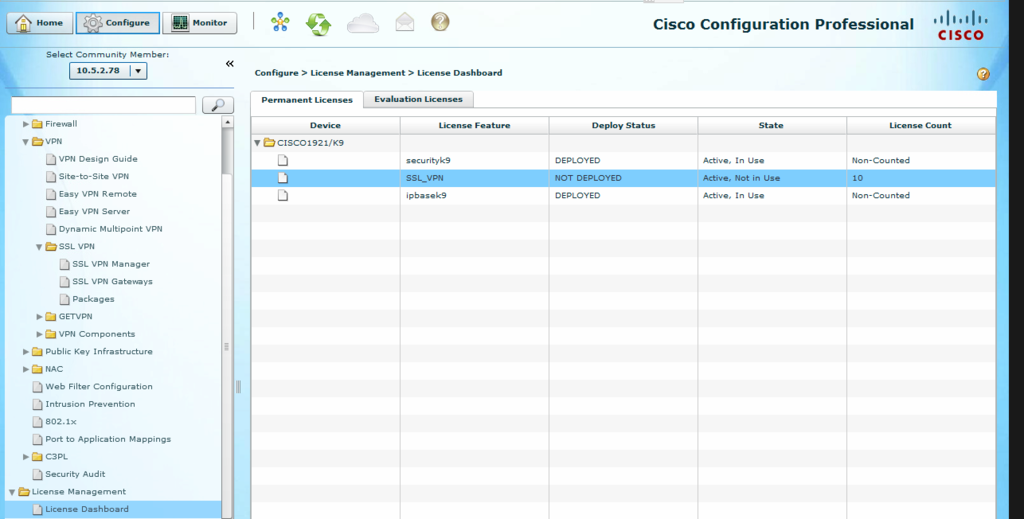
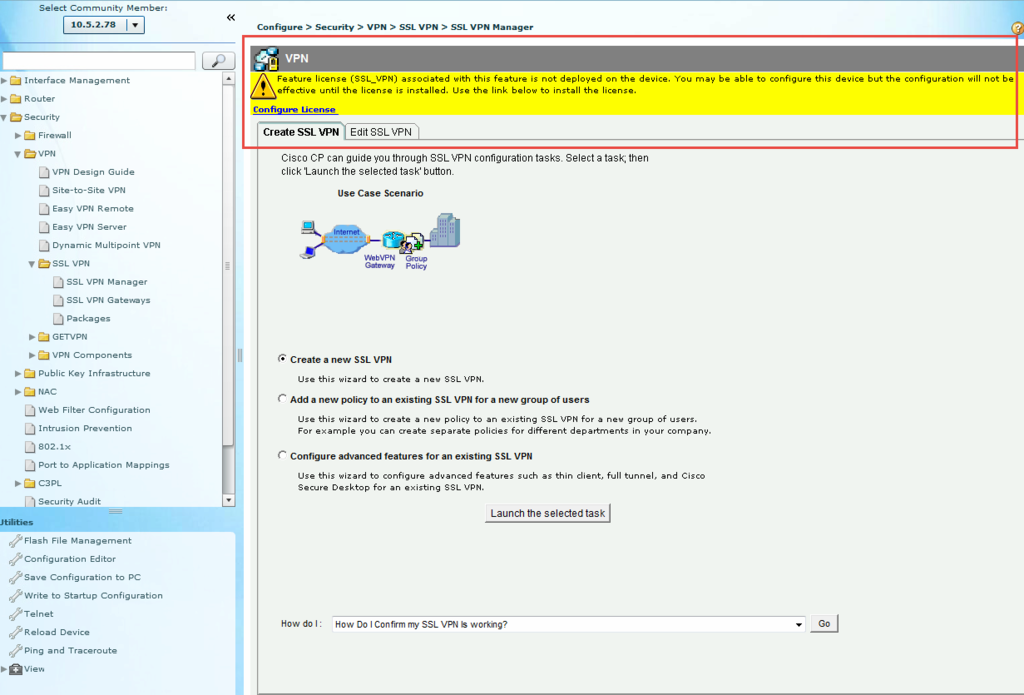
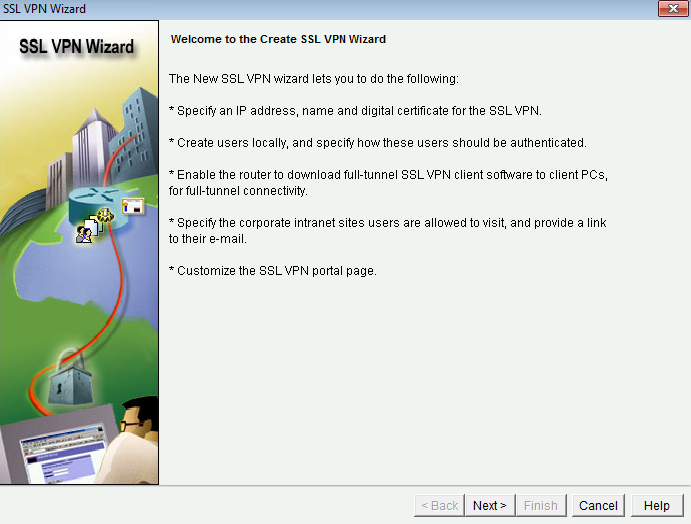
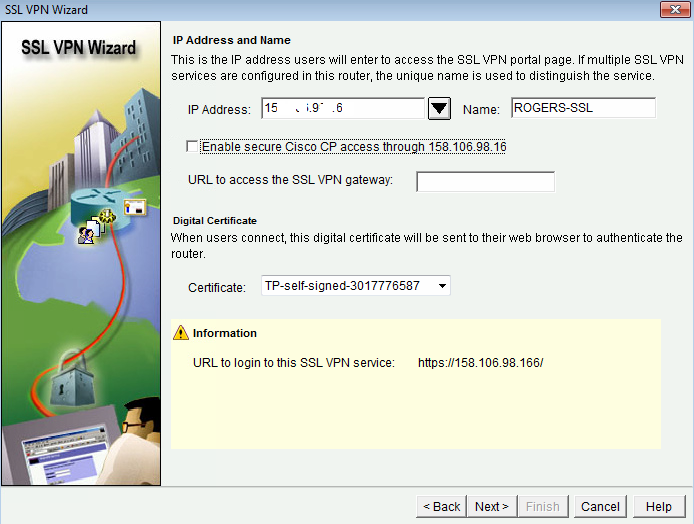
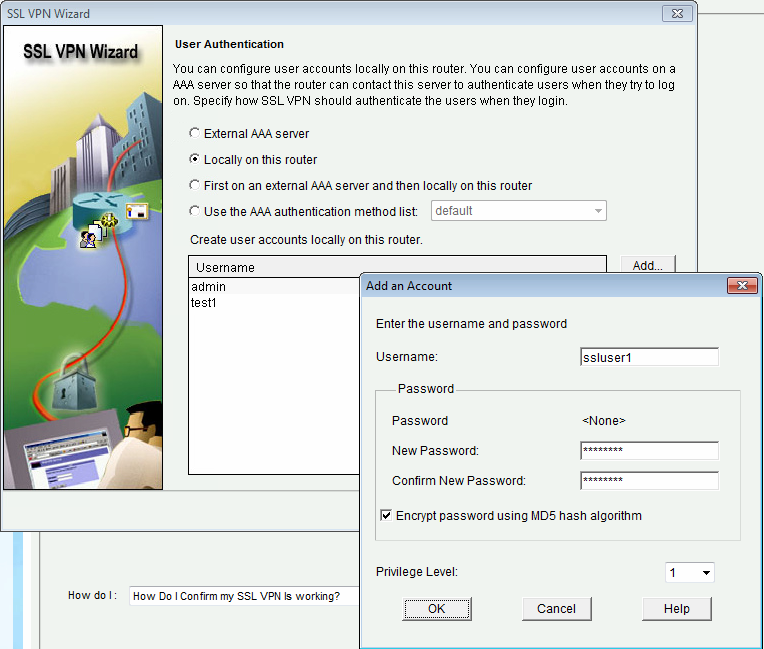
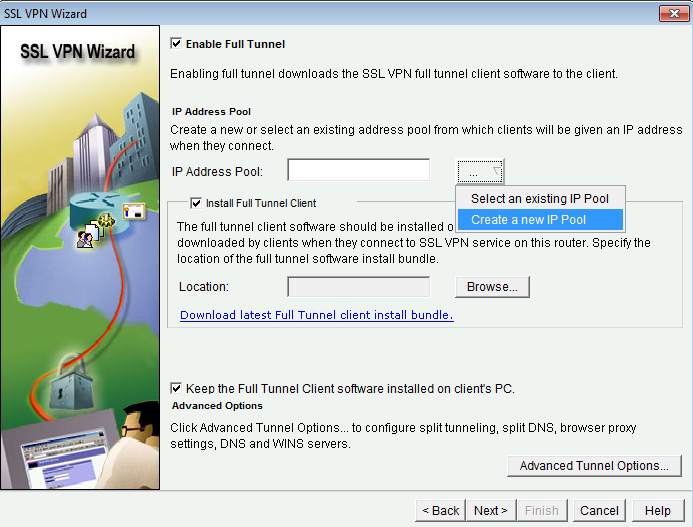
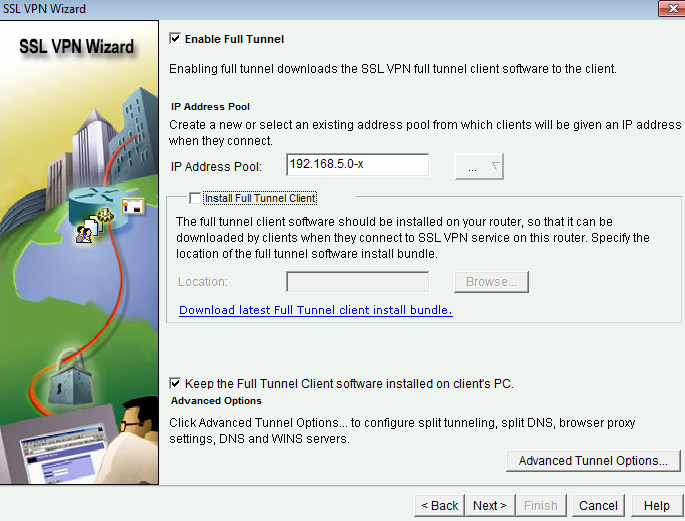

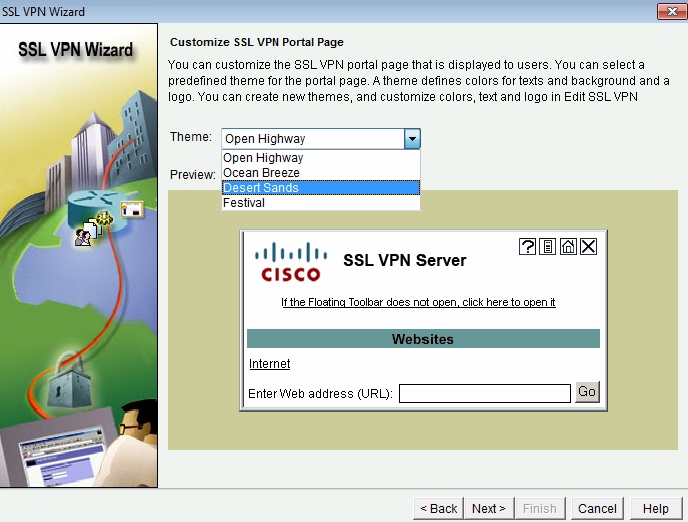

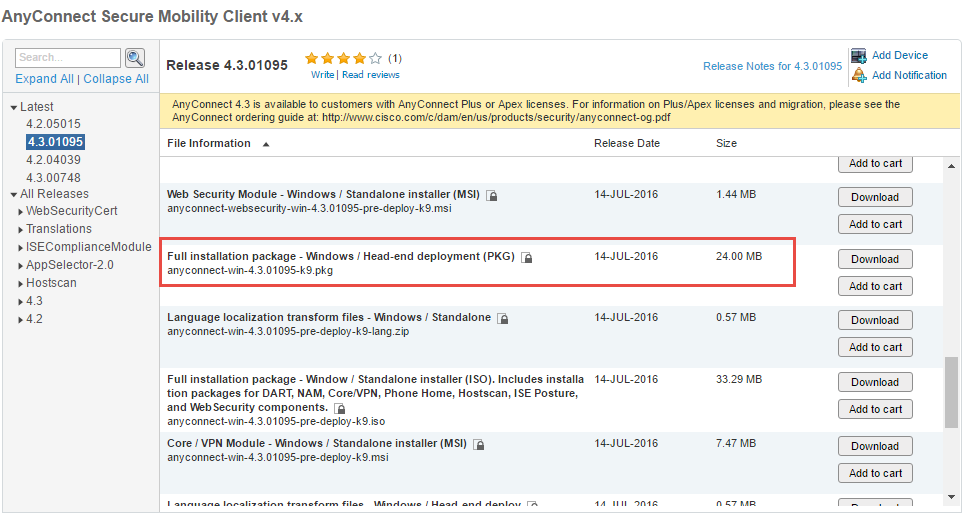
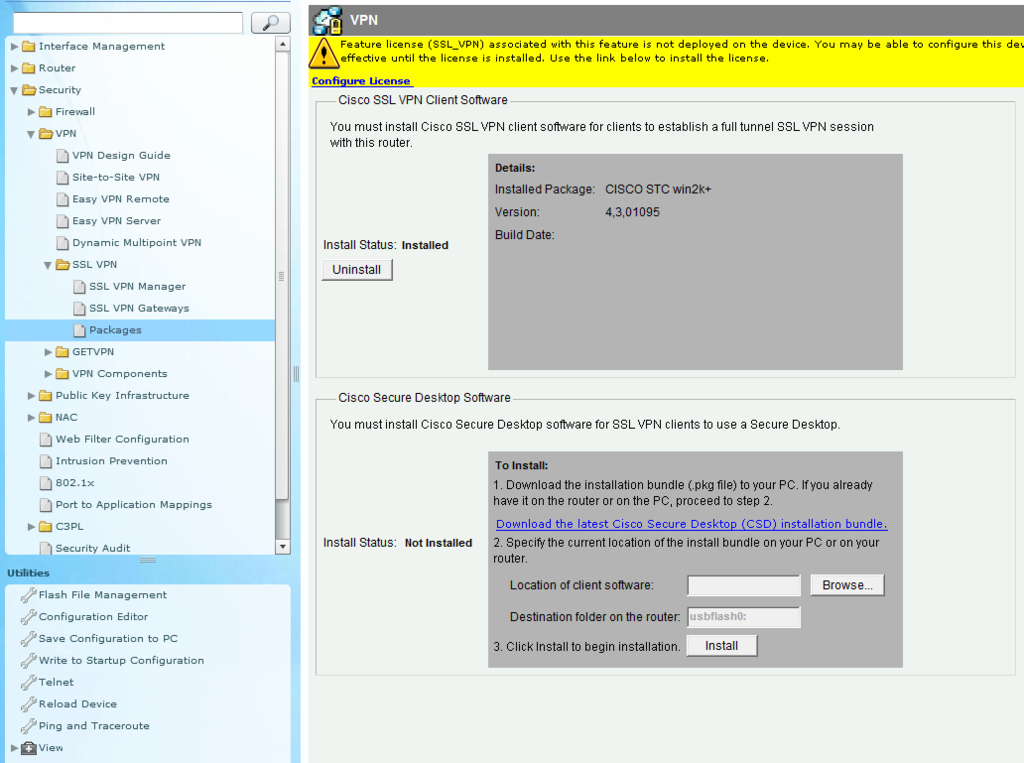
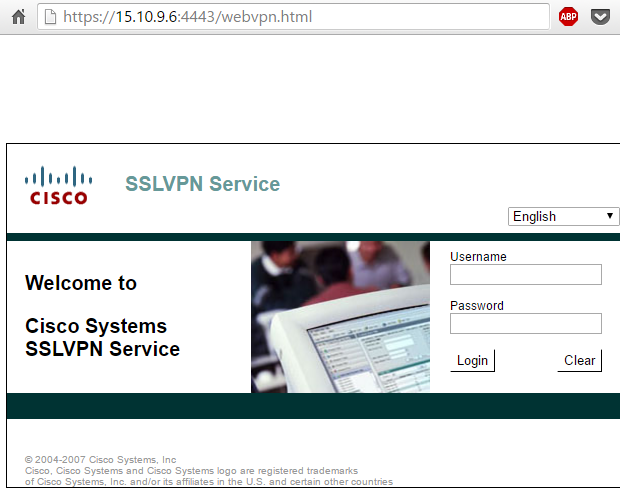
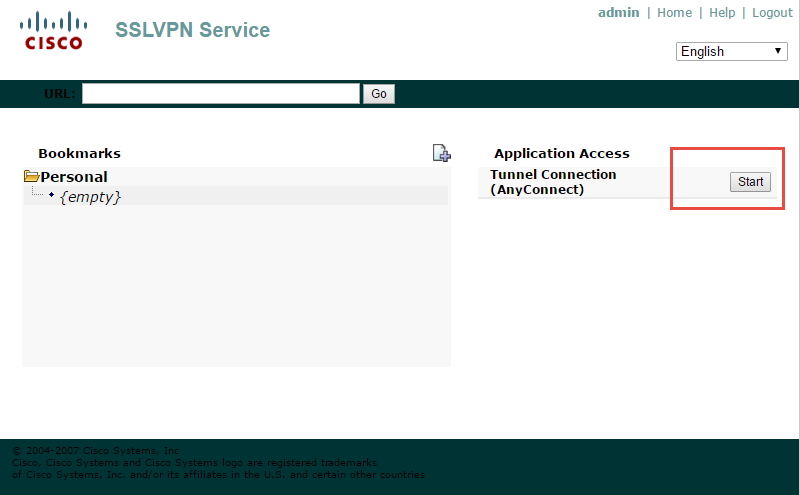
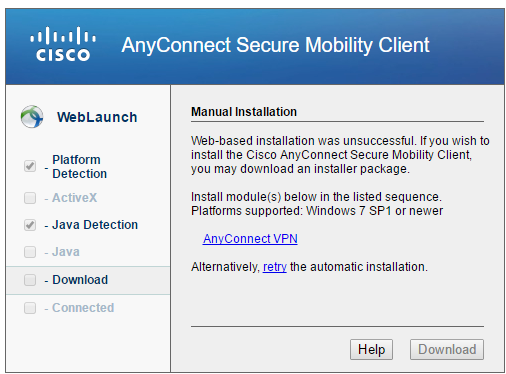
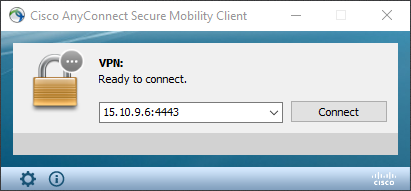







No comments:
Post a Comment